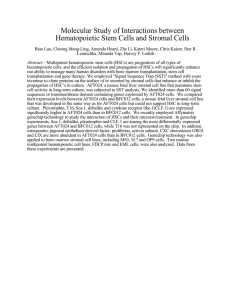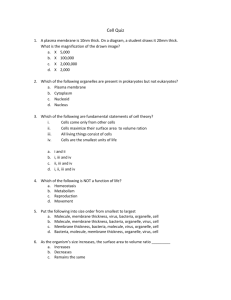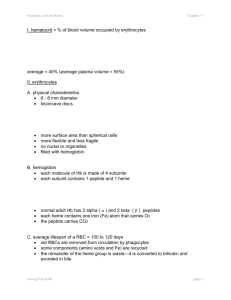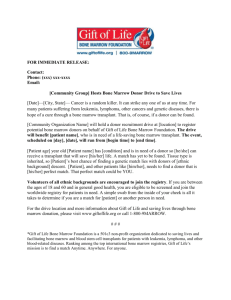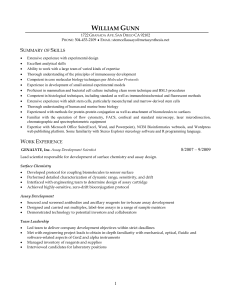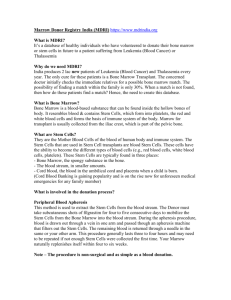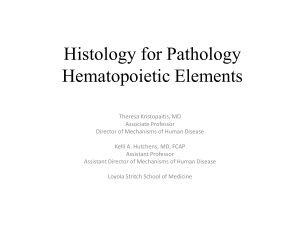Beyond the Basics - 14 Components of Normal Bone Marrow You
advertisement
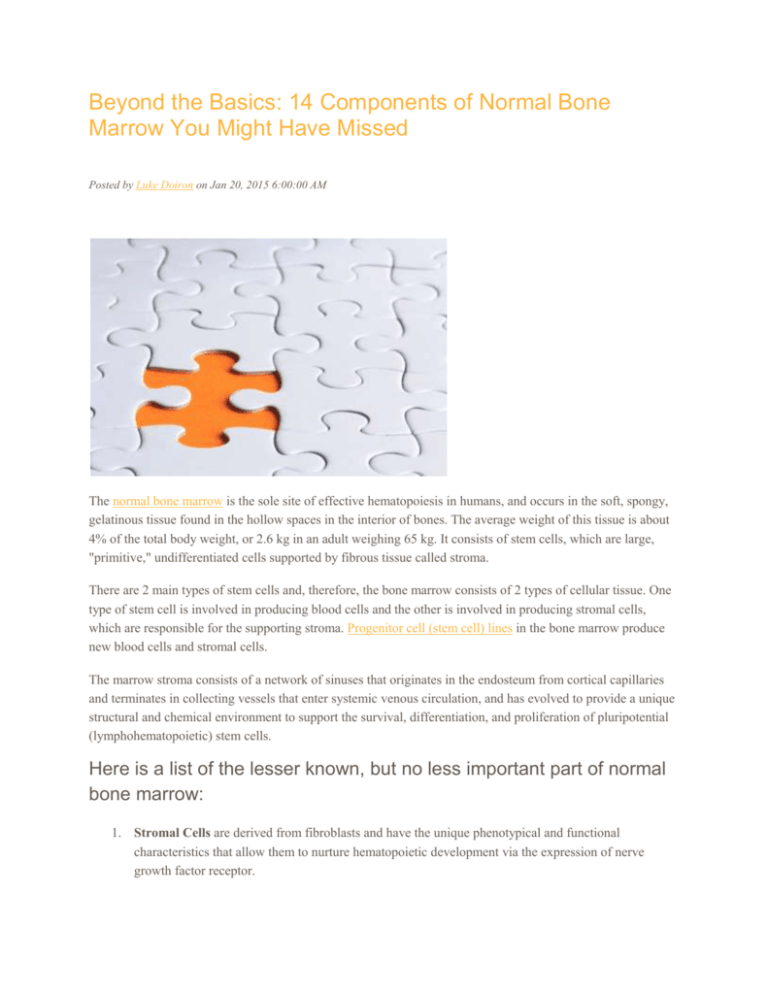
Beyond the Basics: 14 Components of Normal Bone Marrow You Might Have Missed Posted by Luke Doiron on Jan 20, 2015 6:00:00 AM The normal bone marrow is the sole site of effective hematopoiesis in humans, and occurs in the soft, spongy, gelatinous tissue found in the hollow spaces in the interior of bones. The average weight of this tissue is about 4% of the total body weight, or 2.6 kg in an adult weighing 65 kg. It consists of stem cells, which are large, "primitive," undifferentiated cells supported by fibrous tissue called stroma. There are 2 main types of stem cells and, therefore, the bone marrow consists of 2 types of cellular tissue. One type of stem cell is involved in producing blood cells and the other is involved in producing stromal cells, which are responsible for the supporting stroma. Progenitor cell (stem cell) lines in the bone marrow produce new blood cells and stromal cells. The marrow stroma consists of a network of sinuses that originates in the endosteum from cortical capillaries and terminates in collecting vessels that enter systemic venous circulation, and has evolved to provide a unique structural and chemical environment to support the survival, differentiation, and proliferation of pluripotential (lymphohematopoietic) stem cells. Here is a list of the lesser known, but no less important part of normal bone marrow: 1. Stromal Cells are derived from fibroblasts and have the unique phenotypical and functional characteristics that allow them to nurture hematopoietic development via the expression of nerve growth factor receptor. 2. Bone cells from the endosteal lining express glycoproteins, such as vimentin, tenascin, alpha smooth muscle actin and osteocalcin. They are a rich source of stem cells which are positive for the STRO-1 antibody and can differentiate into an adipocyte, chondrocyte, or osteogenic cell. 3. Macrophages and Lymphocytes form part of the marrow microenvironment through growth factor production and cell-cell interactions with developing progenitors. They also play a large role in erythropoiesis. 4. Extracellular Mix consists of mesenchymal cells that are active in laying down a rich “carpet” of proteins, and also give “signals” to form specialized niches that may facilitate lymphocytic or lineage specific pathways. 5. Proteoglycans are macromolecules are a major component of the extracellular mix and involved with the binding of sodium calcium potassium and water. 6. Fibronectin adheres to stromal cells and has dual effects of stimulation as well as inhibition of hematopoietic progenitor growth. 7. Tenascin is an extracellular glycoprotein family that is expressed on the surface of stromal cells and is found in the microenvironment surrounding maturing hematopoietic cells. 8. Collagen is associated with the microvascular walls and is thought to play an important role in the preferential “homing” of engrafted hematopoietic cells to marrow. 9. Laminin is a major component of the extracellular mix and can regulate leukocyte chemotaxis by interacting with collagen. 10. Hemonectin is a glycoprotein that mediates the attachment of granulocytes to marrow. 11. Thrombospondin (TSP) is a multifunctional protein that interacts with collagen and fibronectin to participate in stem cell lodgement. 12. Vitronectin is also known as a serum spreading factor, and is present in plasma, platelets and connective tissue and appears to play a major role in apoptotic cell clearance, cellular activation, and trafficking to areas of inflammation, bone remodeling, and angiogenesis. 13. Integrins mediate embryonic development, cell differentiation, and adhesive interactions between hematopoietic cells and inflammatory cells and surrounding vascular and stromal microenvironments. 14. Hyaladherin is also known as the lymphocyte homing cell adhesion molecule.
